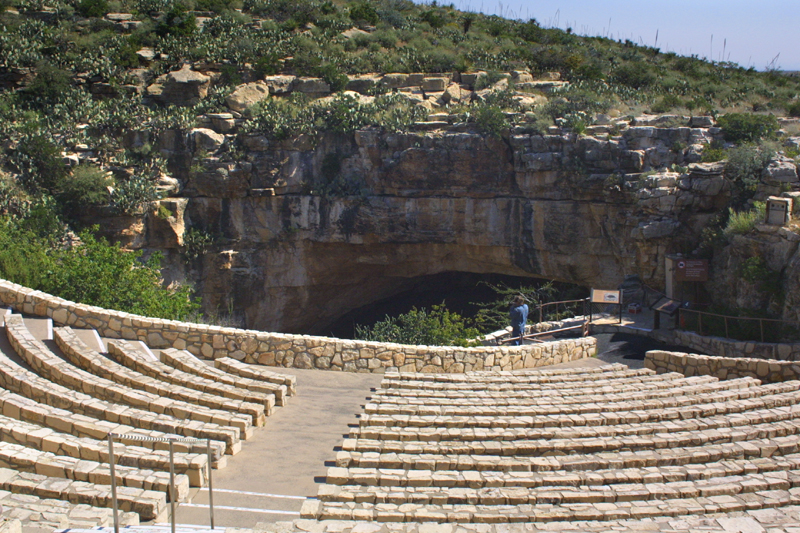
|
This is the amphitheater, and
the natural entrance. The amphitheater was built so that visitors could
watch the nightly bat flights, and the early morning returns.
|
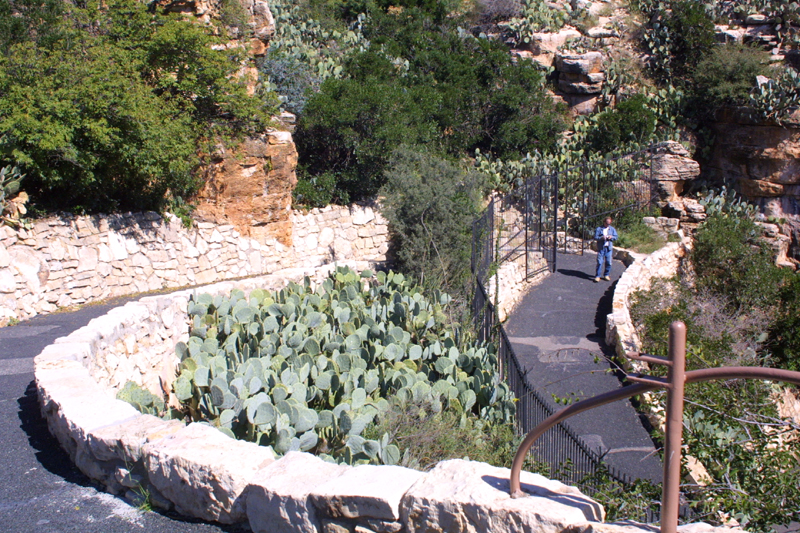
|
A series of paved switchbacks
starts us on our way, before we even get to the cave entrance.
|
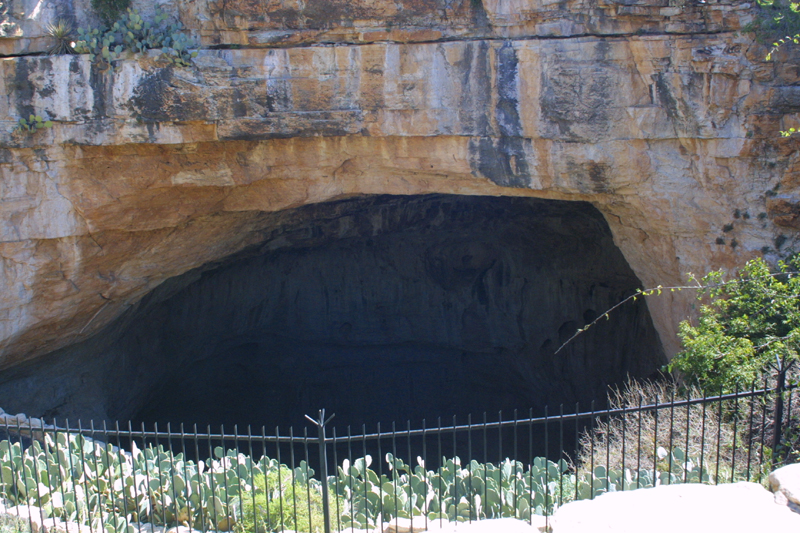
|
This is the cave entrance itself.
Within this very large cave, is the entrance to all of the caverns below.
There is a sizable bat colony living just off from the natural entrance,
and a large colony of swallows, living inside of this cave.
|
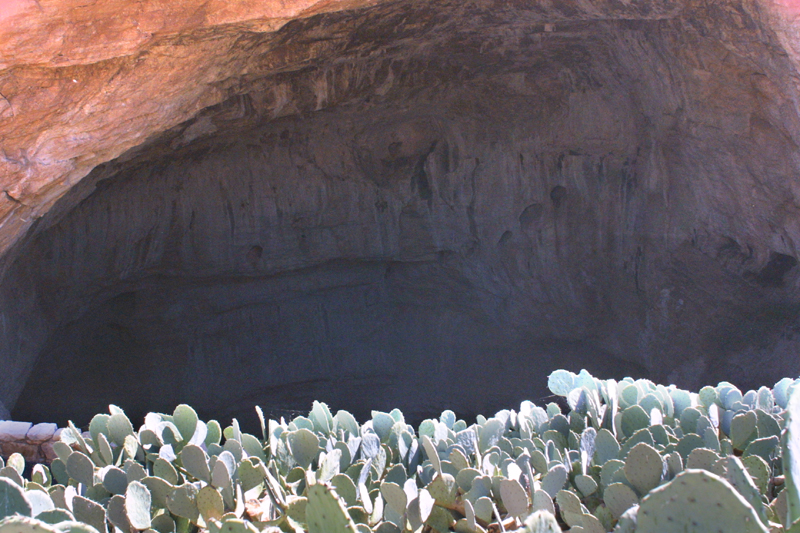
|
A closer look, at the very large
mouth of the cave. Large numbers of swallows live in this cave, and rule
the area during the day, just as the bats appear to rule it at dawn and dusk.
|
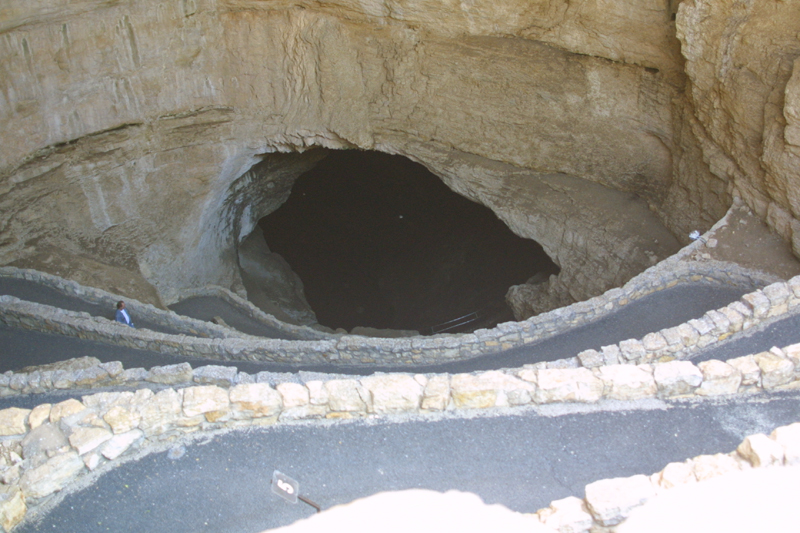
|
Looking down into the cave, and
at the mouth of the cavern entrance. A series of switchbacks gets the visitor
down, more easily, and in more comfort than the original scramble down the
cave. It is also a great advance over the guano buckets which took down early
visitors.
|
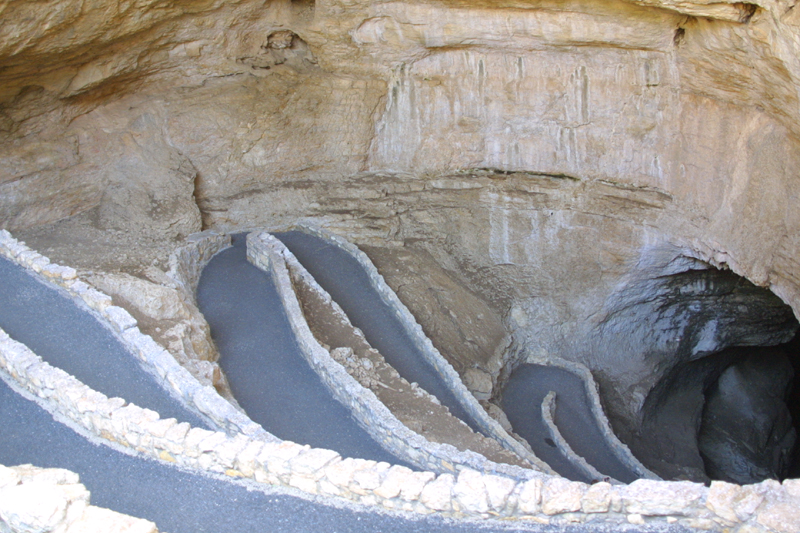
|
A look at the turns of the switchbacks,
and the walls of the cave above. The exposure, on this photo make it appear
to be lighter than it is. In truth, the bottom levels of the cave are in
pretty deep shadow.
|
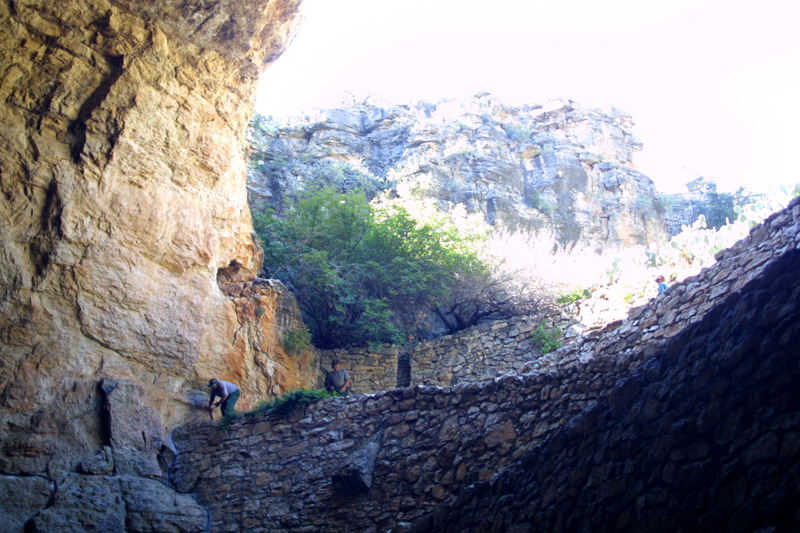
|
A look up at the daylight, outside
of the cave, from about halfway down.
|
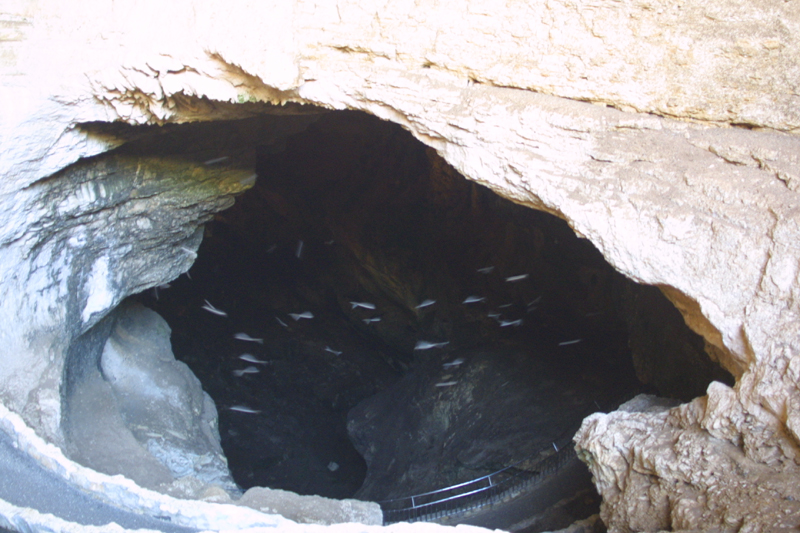
|
A look at the cavern mouth, from
a bit over halfway down. Some guide rails are visible, reflecting the light
from above. The steep slope down, does not end at the cavern entrance. It
will still be a long way down. The blurry figures in the air, are not bats.
They are swallows, which are hunting insects. The bats will sleep until dusk.
|
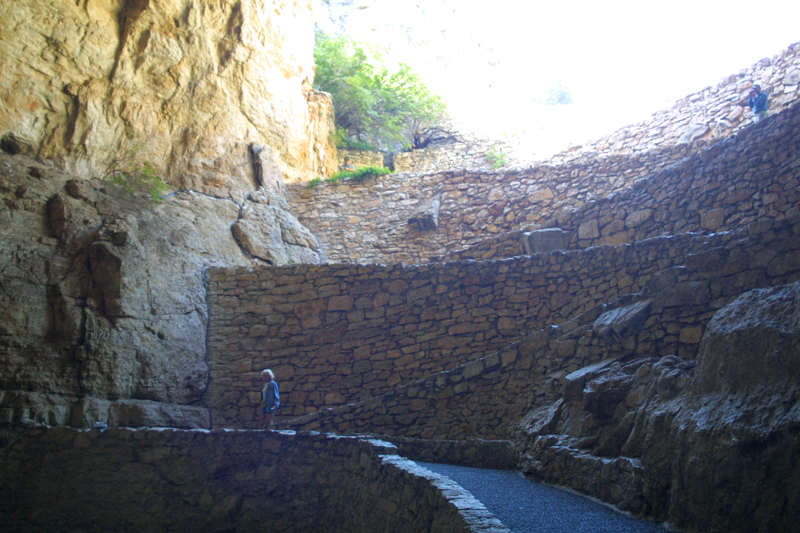
|
A look up, from the halfway point.
A couple of fellow hikers help to give scale to the cave.
|
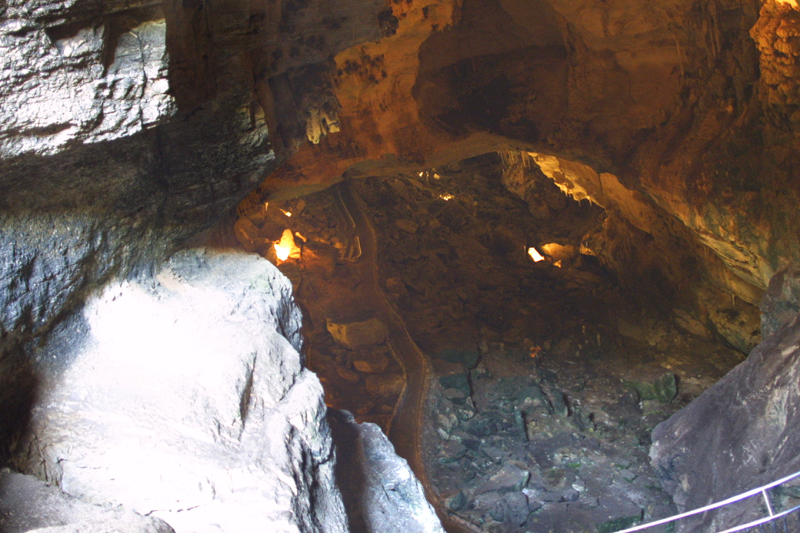
|
A look down, from the mouth of
the cavern. Some trails are visible, leaving the daylight, and meandering
into the artificial light of the caverns.
|
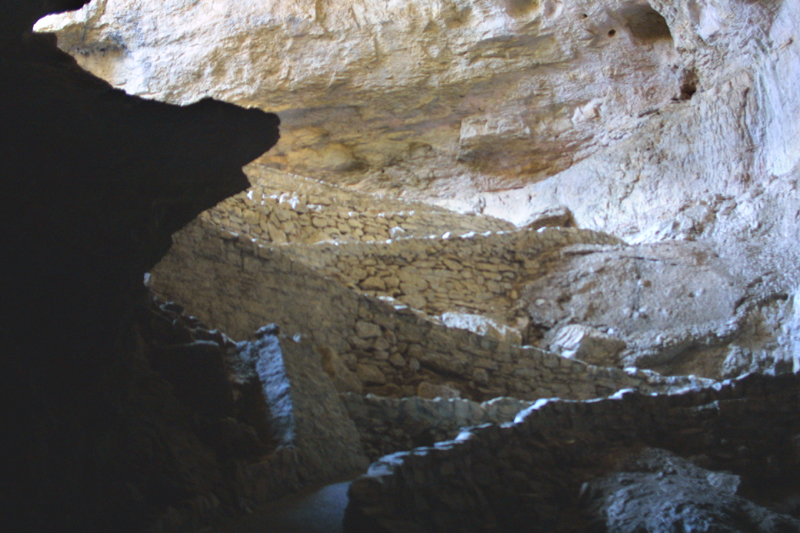
|
A look out into the cave, from
just inside the cavern entrance. The change in perspective is interesting.
Having seemed to be a dark and shadowy place, the cave now gives the impression
of a bright airiness.
|
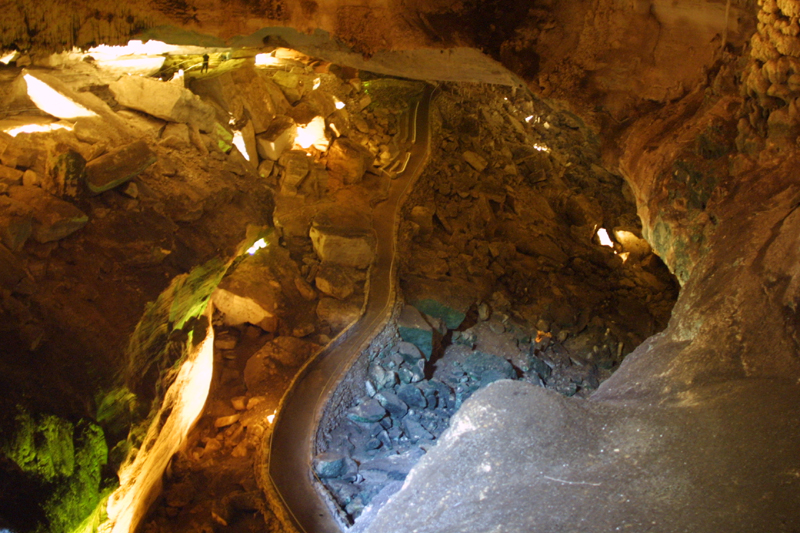
|
At the mouth of the cavern, looking
down at the path below. There will still be several switch backs, before
we are on the path in the photo.
|
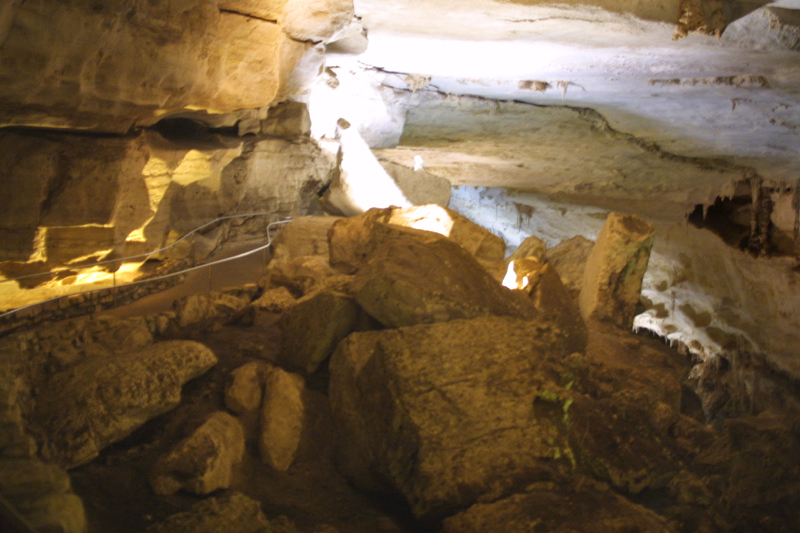
|
Past the cavern entrance, the
path veers to the left, and heads off towards the bat cave. Entrance to the
bat cave is forbidden, and the path does not go there. This is just
as well, for most visitors. Even for those who do not fear bats, the bat
cave has a forty foot deep deposit of bat guano.
|
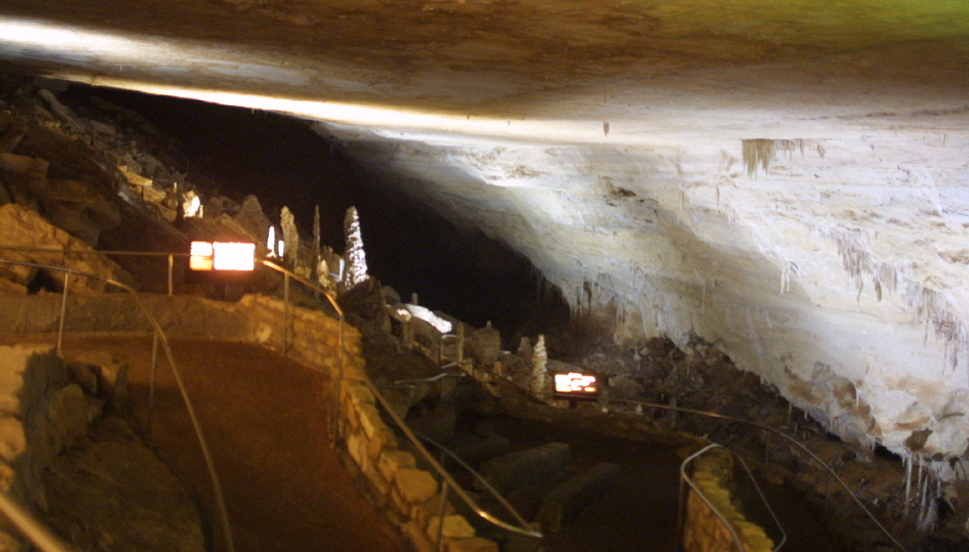
|
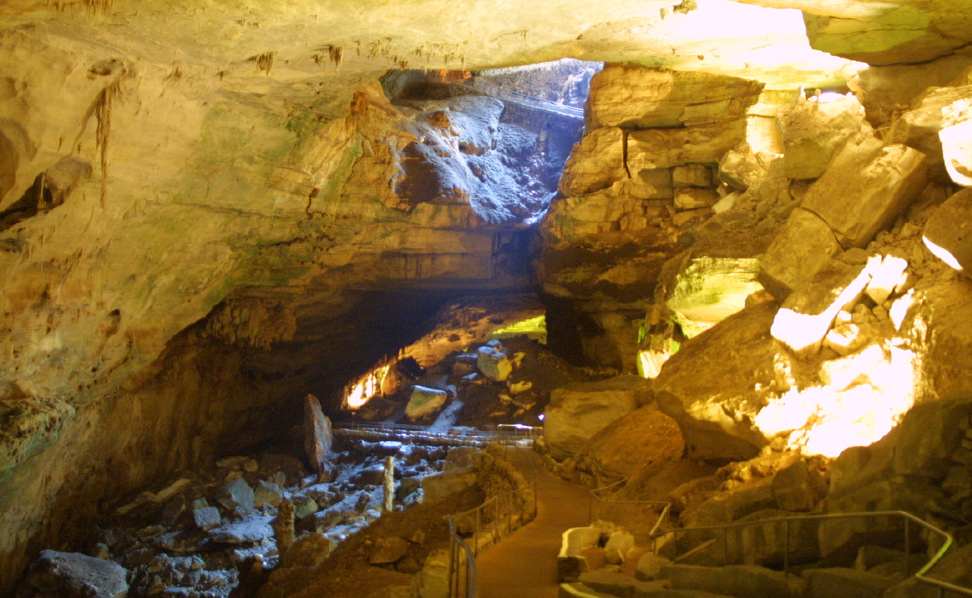
|

|
The path turns here. Continuing
on would take the visitor to the bat cave. Anywhere from tens of thousands,
to millions of bats might be living in this cave, at any given time. There
is a very strong odor to this part of the cave, which leaves no doubt about
the large numbers of animals, or the large amount of droppings present.
|
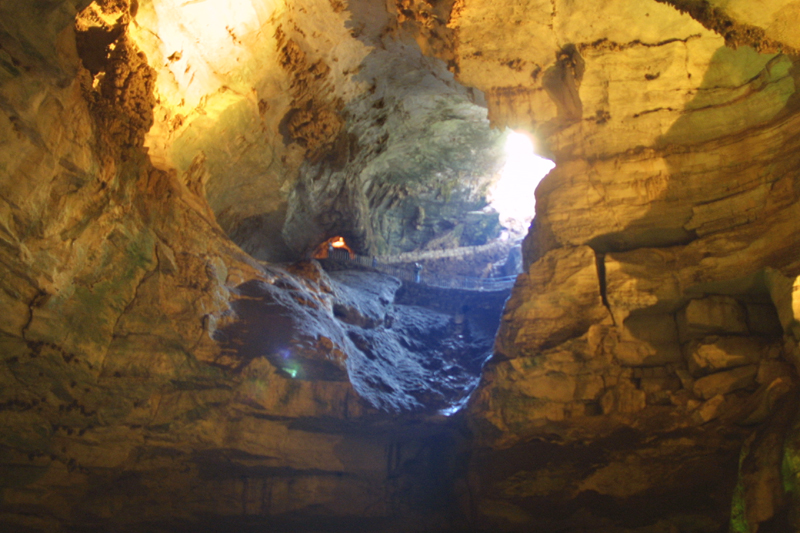
|
A look up at the cavern
entrance, from the path below. A bit of the upper pathway may be seen towards
the middle of the photo.
|
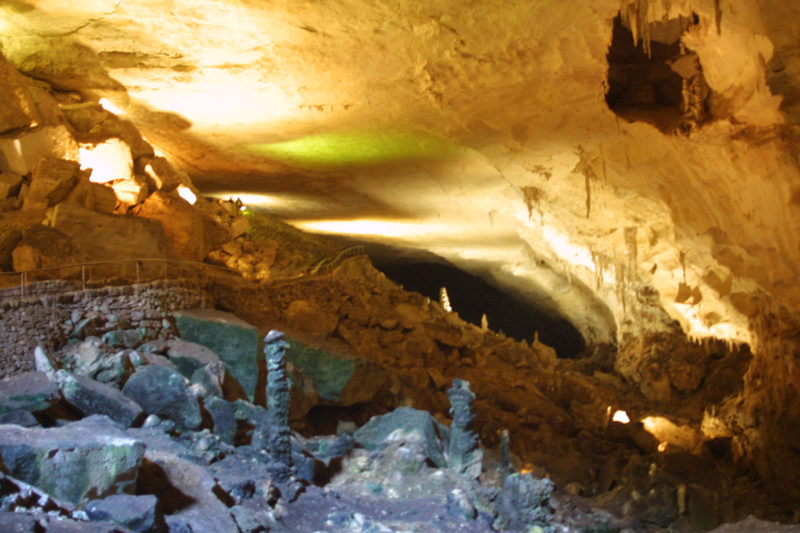
|
A look up, and off towards the
bat cave. There is still some daylight here; but it is at a very low level.
Soon it will be gone. Note that at this level of the cavern, the artificial
light seems as bright, though of a different hue, as that cast by the sun.
|
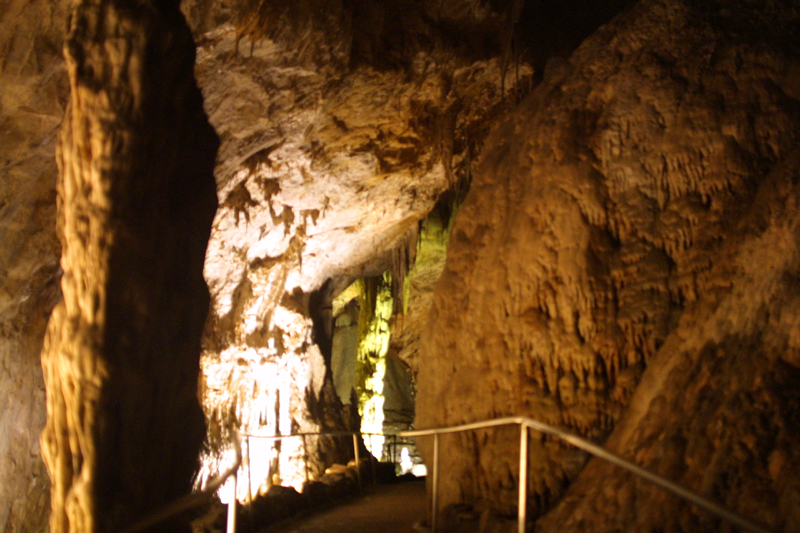
|
We have come down a number of
levels of switchbacks, and are now a couple of hundred feet below ground.
There is no longer any natural light here, and without the electric lighting,
we would be plunged into complete blackness.
|
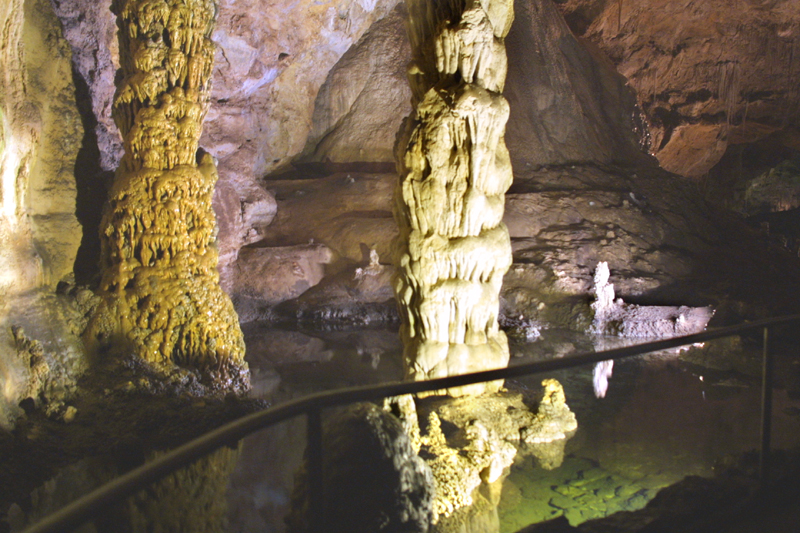
|
A pair of columns, set within
a small pool of water, welcome us to the underworld. This is The Devil's
Spring.
|